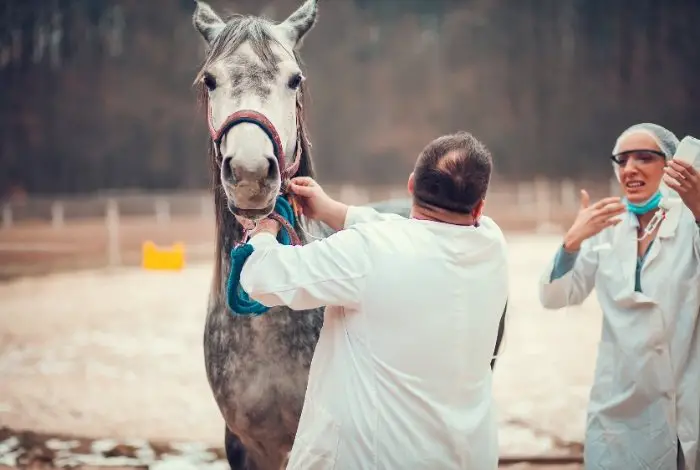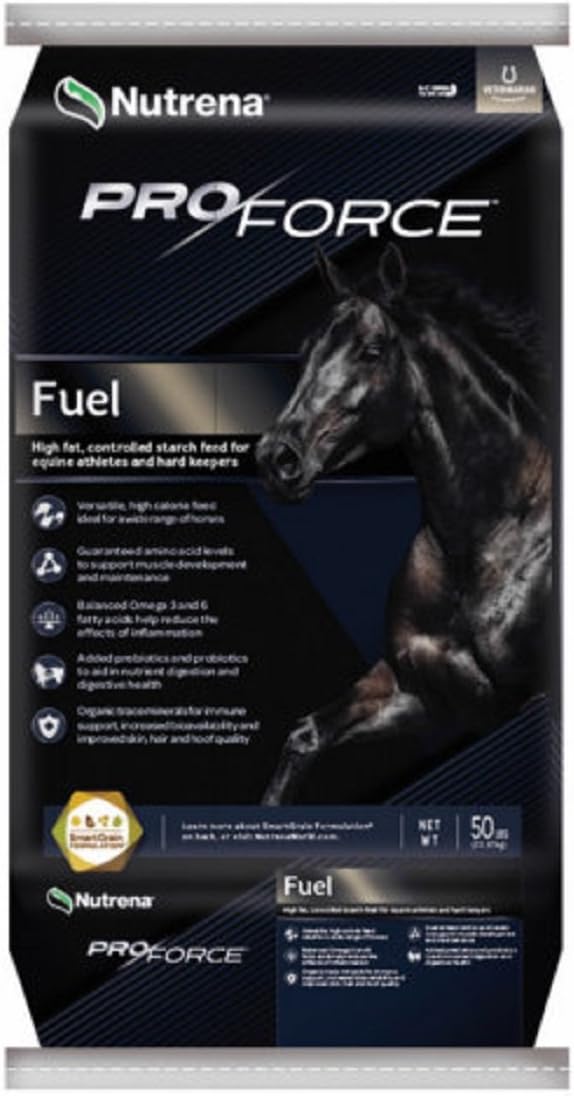Last Updated on January 25, 2022
Tumors and cancer are both conditions commonly found in humans and are just as common in horses. Different types of cancers appear for a variety of different reasons. In general, you may find skin cancer along with various types of internal cancers, but many show up wherever they want when they want. Many cancers are not particular when it comes to their host, but what is a sarcoid on a horse?
What Is a Sarcoid On a Horse? Cancer, Tumour, or Both?
A common skin tumor found only in horses and ponies, that at first glance it may look like warts, but it is more likely a Sarcoid Tumour. Sarcoids are very destructive at the location site, so many vets consider a Sarcoid a form of skin Cancer. Although it is not yet clear as to how Sarcoids initially developed, research is showing indication of being linked to bovine papillomavirus.

Sarcoid Locations
Sarcoids are most common in young to middle-aged horses and most often have a genetic predisposition for possible sarcoid growth. You will usually find these growths on the horse’s abdomen, inside the hind legs, around the sheath, chest, and around the eyes and ears. Scars from previous wounds are also common sites for Sarcoids to grow.
Find The Best Horse Feed Brands on the Market
What Do Sarcoids Look Like?
Tiny lumps that appear in clusters or as single tiny lumps. As the Sarcoid gets bigger the skin often ulcerates and will become infected. In summer the cancer site is very prone to attracting flies, resulting in open sores that do not heal easily. If a Sarcoid is small a horse’s coat can easily conceal the growth. Sarcoids come in a variety of shapes, sizes, and textures.
Some are smooth while others are rough. They can have skin lumps or nodules and a similar look to cauliflower. Some Sarcoids will become very aggressive and be considered fibroblastic or malevolent, while others maintain their same shape and size, and in some cases will clear up without any type of treatment.
Learn more about What is DSLD in Horses?
Sarcoid Treatment In Horses
Treating Sarcoids is very important and should be taken seriously. Often if a Sarcoid grows others will grow elsewhere on the horse’s body. Treatment is most effective if started early on before the Sarcoid becomes large, making it more difficult to remove. Several treatment options are available but there is no magical cure and there is a high risk of the Sarcoid returning.
ProForce NUTRENA High Amino Acid Organic Equine Feed
Treatment Options
Surgery – Surgical removal of a Sarcoid has a very high failure rate. The wound in most cases heals poorly, and the Sarcoid will usually come back.
Ligation – This can be a very painful option for the horse, especially if the Sarcoid is located in a delicate area. A tight band is placed around the base of the tumor and will cause it to fall off. There is a very high risk of tumor cells being left behind and causing the Sarcoid to regrow.
Cryotherapy – Under general anesthesia for pain, the tumor can be destroyed by freezing it. This treatment requires multiple lengthy treatments for treatment to be done safely and effectively.
Immune Therapy – Under heavy sedation, treatments involve an injection of BCG to stimulate the horse’s immune system to eliminate the tumor. There is a risk of reaction with this treatment so premedication is advised.
Topical Treatment – Special creams, of high metal makeup, have been successful in some cases, usually with smaller lesions.
Radiation Therapy – This can be very effective as a treatment but the danger of radiation exposure makes this a very expensive choice and also requires the horse to be under general anesthesia. Radiation therapy can only be done at specialized centers due to the technical difficulties involved.
Laser Removal – This treatment is a relatively new treatment option, but under standing sedation, with local anesthetic or under general anesthesia a surgical laser is used to remove the tumor.
With all treatment options treatment must continue until there is a positive response to the treatment. If treatment is stopped before the Sarcoid is eliminated, there is a strong possibility of it returning and in most cases will appear worse than the original lesion.
Conclusion
Sarcoid tumors are not life-threatening. Their development can be annoying for the horse if it is located in a place that is irritated by tack or other areas that can produce friction. Horses can live a relatively normal life even if Sarcoids are present throughout their lifespan.
Providing treatment and trying to maintain a Sarcoid small in size will help with the chances of infection and/or irritation. Follow the treatment plan you receive from your vet for the elimination of the remaining Sarcoid cells.
Can you remove Sarcoids in horses?
If the sarcoid is causing pain, it may be possible to treat the horse with antibiotics (to reduce the swelling), steroids (to reduce inflammation) or other medications. The decision to surgically remove a sarcoid is a complicated one and should only be considered after all other treatment options have been exhausted. A good veterinary surgeon will have experience with the surgical removal of sarcoids and be able to offer you sound advice. Your veterinarian will be able to advise you about the best way to remove a sarcoid in your horse. The technique that will be used will depend on the type of sarcoid, the location and size of the sarcoid, and the effect the sarcoid has on the function of the horse.
How are Sarcoids diagnosed in horses?
The definitive diagnosis is usually made by biopsy, but this can trigger an uncontrolled growth of the tumor and may make the condition worse.
Sarcoids are generally considered to be non-malignant tumors, but some may be precancerous or even cancerous. Malignant sarcoids grow quickly and may metastasize. They often cause lameness, weight loss, fever, and other signs of pain or discomfort.
What causes sarcoid tumors in horses?
Genetic susceptibility appears to be a major factor. Horses are thought to be genetically susceptible to sarcoid tumors that are caused by bovine papilloma virus (BPV). That means that horses that are genetically susceptible to the virus are likely to keep developing sarcoids while not every horse exposed to the virus will develop sarcoids.
Although sarcoids are the most common form of equine skin tumor, they are not all that dangerous. Sarcoids can be removed with little risk of complications. However, if the sarcoid is allowed to remain on the horse’s body it may become infected and cause other problems.
Should I buy a horse with a sarcoid?
Sarcoid is a chronic disease of horses, affecting the skin and sometimes other organs. It is not contagious. However, a horse with one or more sarcoids is almost certainly affected genetically. It may have a long life and the condition may not get any worse but the horse will most likely need treatment for its sarcoids. In any case, a horse should be thoroughly examined before purchase. If the sarcoid is not treated or has spread from one limb to another, the horse is no longer suitable for breeding.
If you do decide to buy a horse with sarcoids, remember that you will need to regularly monitor its health. You will also need to treat it for any problems that it may develop. The horse with sarcoids can require regular veterinary attention and care.
Are Sarcoids serious?
One of the main reasons why we are concerned about Sarcoids is that they can develop into a life threatening disease called cutaneous squamous cell carcinoma (SCC). This happens when the sarcoid becomes inflamed and starts growing uncontrollably. If it gets out of control, it may cause the horse to have a high fever, have problems breathing, become weak or even collapse.
How can I tell if my horse has Sarcoids? When a horse is showing signs of pain or discomfort in the area where Sarcoids are found, or if they are looking lethargic and don’t seem to be eating properly, then they may have Sarcoids. A vet will be able to diagnose this condition by examining the horse’s skin.
Michael Dehaan is a passionate horse owner, horse rider, and lover of all things equine. He has been around horses since he was a child, and has grown to become an expert in the field. He has owned and ridden a variety of horses of different breeds, and has trained many to compete in shows and competitions. He is an experienced horseman, having worked with and competed many horses, including his own. He is an active member of the equestrian community, participating in events and teaching riding lessons.

